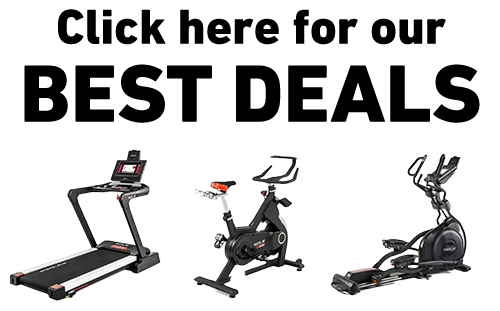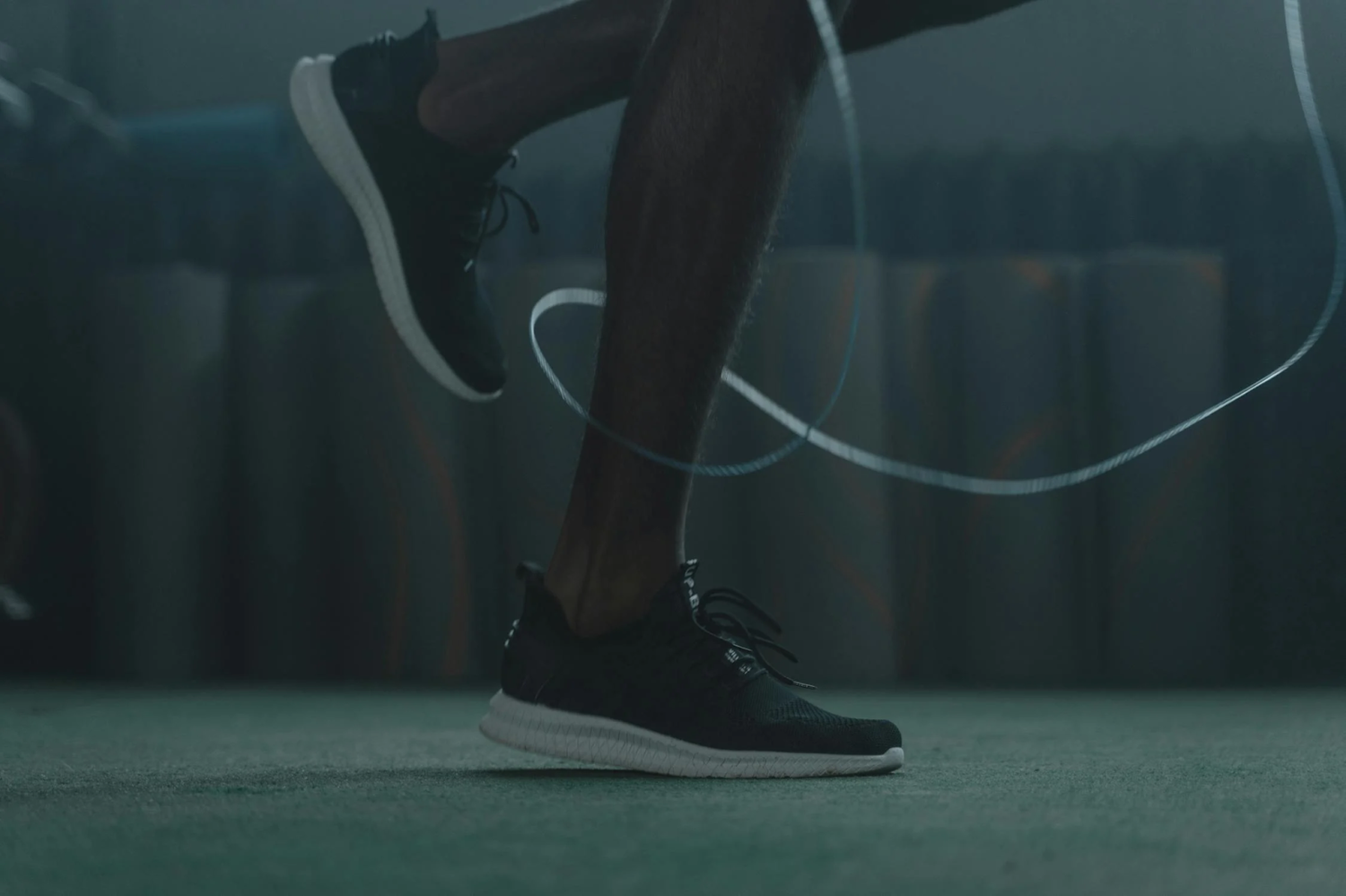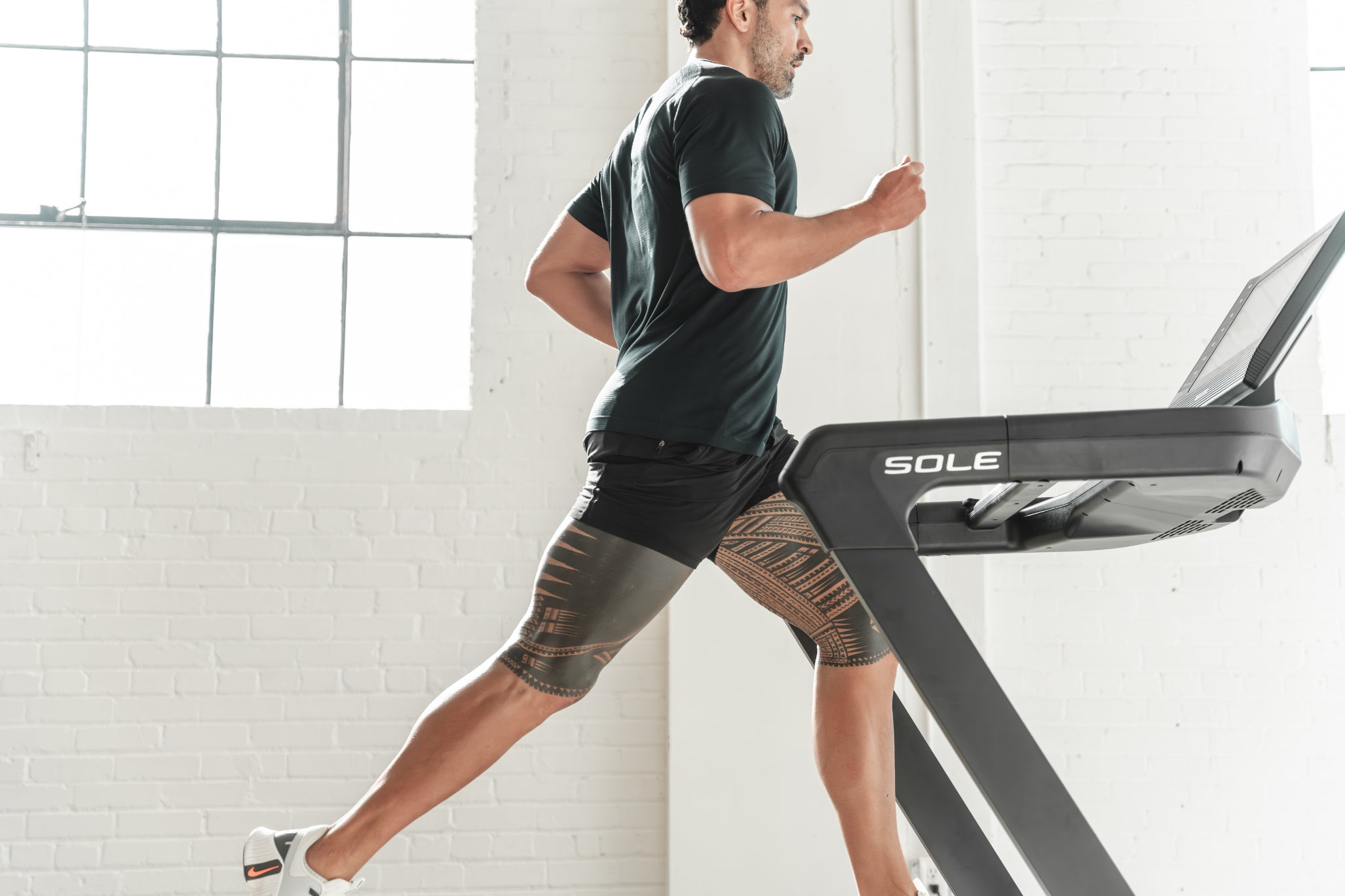Key Takeaways
- Running on a treadmill is generally better for your knees than jumping rope due to lower impact forces.
- Jumping rope can be knee-friendly if done with proper form and on a soft surface.
- SOLE treadmills have cushioned running surfaces that reduce stress on your knees.
- Proper footwear is crucial for both treadmill running and jumping rope to minimize knee injuries.
- Alternatives like aqua jogging and mini trampoline jumping can also reduce knee impact.
|
At SOLE Fitness, we're proud to offer the best treadmills for your home or gym. These machines are crafted to meet the highest standards of quality and performance, ensuring they are ideal for anyone - from fitness novices to seasoned athletes. Featured Product SOLE Treadmills: Starting at $1,199.99, SOLE treadmills excel in ergonomic design, durability, and value. Equipped with advanced cushioning to minimize joint impact, powerful, quiet motors, and wide running surfaces, they suit any fitness level. |
Exercise Benefits Overview
Treadmill Pros
Running on a treadmill is a popular choice for many fitness enthusiasts, and for good reason. You can adjust the speed, incline, and even track your progress on most modern treadmills, like those from SOLE. For example, our F85 treadmill has 15 incline and 6 decline levels.
Treadmills also often come with cushioned running surfaces that can significantly reduce the impact on your knees, and prevent knee injuries, especially if you run regularly. For instance, all SOLE treadmills feature a Cushion Flex Whisper Deck, which reduces joint impact by up to 40% compared to running on asphalt.
Treadmill Cons
Running on a treadmill can sometimes feel monotonous, so it can be hard to stay motivated. Improper form or overuse can still lead to knee injuries, even with the cushioning—so it's essential to maintain good posture and vary your workouts to avoid repetitive strain.
Jumping Rope Pros
Jumping rope is efficient at burning calories and improving cardiovascular health. Plus, it's portable and requires minimal equipment—just a good-quality rope and some space.
Jumping rope can be less stressful on your knees if done correctly. According to a 2019 study published in Gait & Posture Journal, jumping rope puts less stress on your knees compared to running, provided you maintain proper form. This means keeping your knees slightly bent, jumping on a soft surface, and wearing shock-absorbing shoes.
Jumping Rope Cons
The high-impact nature of the exercise can be hard on your knees if you don't use proper form. Jumping too high or landing improperly can lead to knee pain or injuries—so it’s important to focus on technique and start slowly, gradually increasing intensity as you become more comfortable.
Impact on Knees
Ground Reaction Forces
Ground reaction forces (GRFs) refer to the force exerted by the ground on your body during physical activity. Running on a treadmill typically generates lower GRFs compared to jumping rope, because the treadmill's cushioned surface absorbs some of the impact, reducing the stress on your knees.
On the other hand, jumping rope generates higher GRFs, especially if you jump on a hard surface. However, you can mitigate this by using a soft surface and proper footwear.
Joint Stress Comparison
The cushioned surface and controlled environment of treadmills make it easier on your knees and joints. In contrast, the repetitive jumping motion in rope skipping can lead to more significant joint stress if not done correctly.
Surface Differences
The surface you exercise on plays a significant role in knee health. Treadmills offer a consistent, cushioned surface that can help reduce knee impact. As stated earlier, SOLE treadmills are designed with advanced cushioning systems to protect your joints.
Jumping rope, however, can vary depending on where you do it. Hard surfaces like concrete can increase the risk of knee injuries—so it's best to jump on softer surfaces like rubber mats or grass to minimize impact.

Reducing Risk of Injury
Whether you prefer running on a treadmill or jumping rope, there are specific techniques and considerations that can help you stay injury-free.
Proper Treadmill Running Techniques
- Maintain Good Posture: Keep your back straight, shoulders relaxed, and head up. Avoid leaning forward or backward.
- Use a Midfoot Strike: Aim to land on the middle of your foot rather than your heel or toes. This can help distribute the impact more evenly.
- Adjust the Incline: Running at a slight incline (1-2%) can reduce the impact on your knees compared to running on a flat surface.
- Warm-Up and Cool Down: Always start with a warm-up and end with a cool-down to prepare your muscles and joints for the workout.

Proper Jump Rope Techniques
- Keep Your Knees Slightly Bent: This helps absorb the shock and reduces the impact on your knees.
- Jump on Soft Surfaces: Use a rubber mat, grass, or other soft surfaces to minimize impact.
- Use the Right Rope Length: Ensure your jump rope is the correct length for your height. When you stand on the middle of the rope, the handles should reach your armpits.
- Focus on Form: Keep your jumps low (about 1-2 inches off the ground) and land softly on the balls of your feet.
Appropriate Footwear
When running on a treadmill, choose running shoes with good arch support and cushioning. SOLE treadmills' cushioned decks work best when paired with quality running shoes.
For jumping rope, opt for cross-training shoes that offer shock absorption and stability.
Alternatives and Modifications
If you're concerned about knee impact but still want to enjoy the benefits of cardio exercise, consider some alternatives and modifications.
Aqua Running
Aqua running, or water jogging, is an excellent low-impact alternative which provides resistance without the harsh impact on your knees—ideal for those with knee issues or anyone looking to reduce joint stress.
Aqua running can also improve cardiovascular fitness and muscle strength. You can use a buoyancy belt to help keep you afloat and maintain proper running form in the water.
Mini Trampoline Jumping
Jumping on a mini trampoline, also known as rebounding, is another great low-impact option. The trampoline's surface absorbs much of the impact, reducing stress on your knees.

Low Impact Cross Training
Incorporating low-impact cross-training exercises into your routine can help reduce the overall stress on your knees. Activities like cycling, swimming, and using an elliptical machine can provide excellent cardio benefits without the high impact of running or jumping rope.
Mixing these activities with treadmill running or jumping rope can help you stay fit while protecting your knees from overuse injuries.
Final Thoughts
Ultimately, the best exercise for your knees depends on your personal fitness goals, preferences, and any existing knee conditions.
Running on a treadmill is generally better for your knees and cardio fitness due to the lower impact forces and cushioned surfaces. Treadmills like those from SOLE offer advanced cushioning systems that significantly reduce joint stress.
If you prefer the efficiency and portability of jumping rope, make sure to follow proper techniques and use appropriate footwear. Consider incorporating low-impact alternatives like aqua running or mini trampoline jumping to further protect your knees.
Frequently Asked Questions (FAQ)
Are treadmills safe for knee pain?
Yes, treadmills can be safe for knee pain if you choose a model with good cushioning and follow proper running techniques. SOLE treadmills, for example, offer advanced cushioning systems that reduce joint impact. Maintaining good posture, using a midfoot strike, and adjusting the incline can further protect your knees.
Is jumping rope good for building muscle?
Jumping rope is primarily a cardiovascular exercise, but it can also help build muscle, particularly in your legs and core. The repetitive jumping motion engages your calves, quads, hamstrings, and core muscles. However, if your primary goal is muscle building, you may want to incorporate strength training exercises alongside jumping rope.
What equipment is needed for jumping rope?
Jumping rope requires minimal equipment. All you need is a good-quality jump rope and appropriate footwear. Ensure the rope is the correct length for your height, and wear cross-training shoes that offer shock absorption and stability. Jumping on a soft surface like a rubber mat can help reduce knee impact.
Can running on a treadmill improve cardiovascular health?
Absolutely. Running on a treadmill is an excellent way to improve cardiovascular health as it helps increase your heart rate, improve lung capacity, and boost overall endurance. Treadmills also allow you to control the intensity of your workout by adjusting the speed and incline, so you can tailor your exercise to your fitness level.



Leave a comment
This site is protected by hCaptcha and the hCaptcha Privacy Policy and Terms of Service apply.